Micron C400 mSATA (128GB) SSD Review
by Anand Lal Shimpi on April 10, 2012 8:00 AM ESTRandom Read/Write Speed
The four corners of SSD performance are as follows: random read, random write, sequential read and sequential write speed. Random accesses are generally small in size, while sequential accesses tend to be larger and thus we have the four Iometer tests we use in all of our reviews.
Our first test writes 4KB in a completely random pattern over an 8GB space of the drive to simulate the sort of random access that you'd see on an OS drive (even this is more stressful than a normal desktop user would see). I perform three concurrent IOs and run the test for 3 minutes. The results reported are in average MB/s over the entire time. We use both standard pseudo randomly generated data for each write as well as fully random data to show you both the maximum and minimum performance offered by SandForce based drives in these tests. The average performance of SF drives will likely be somewhere in between the two values for each drive you see in the graphs. For an understanding of why this matters, read our original SandForce article.
Many of you have asked for random write performance at higher queue depths. What I have below is our 4KB random write test performed at a queue depth of 32 instead of 3. While the vast majority of desktop usage models experience queue depths of 0 - 5, higher depths are possible in heavy I/O (and multi-user) workloads:
Sequential Read/Write Speed
To measure sequential performance I ran a 1 minute long 128KB sequential test over the entire span of the drive at a queue depth of 1. The results reported are in average MB/s over the entire test length.
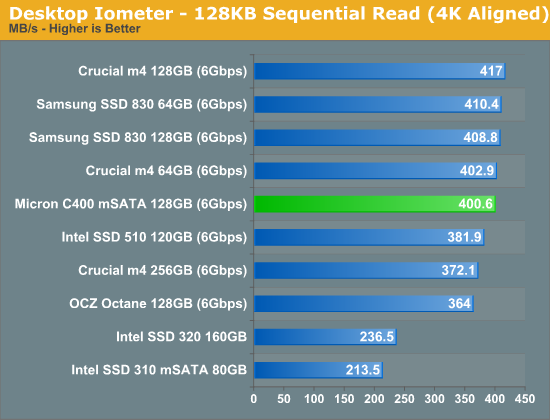
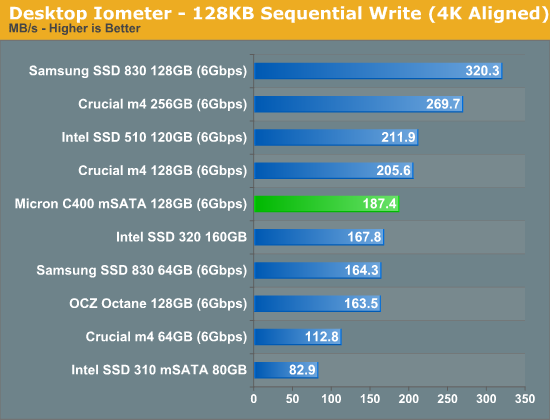
AS-SSD Incompressible Sequential Performance
The AS-SSD sequential benchmark uses incompressible data for all of its transfers. The result is a pretty big reduction in sequential write speed on SandForce based controllers.
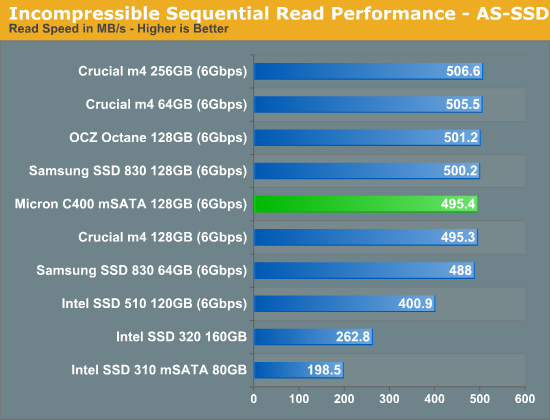
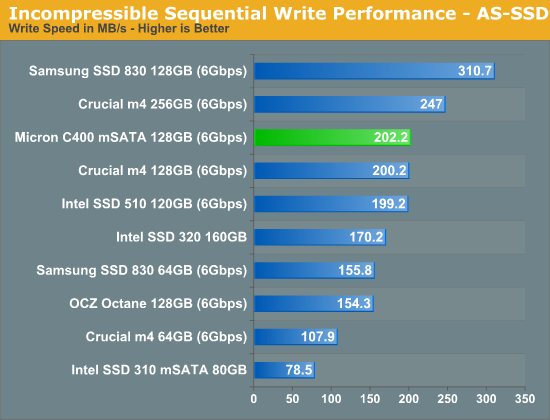


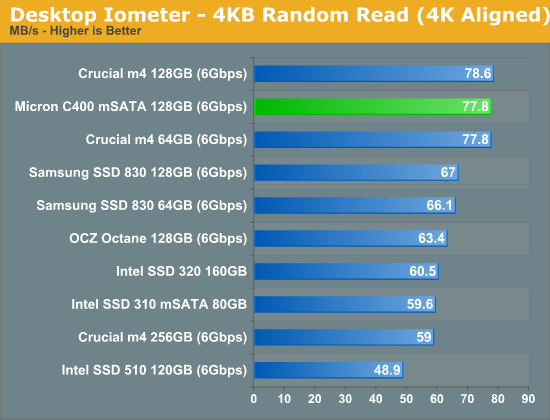
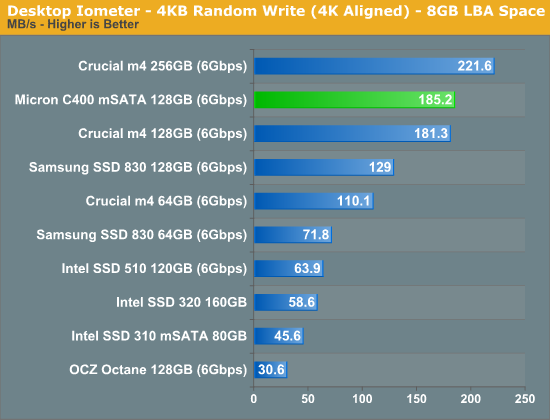
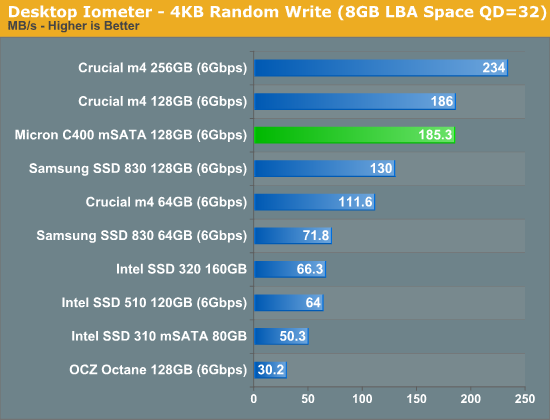








47 Comments
View All Comments
shaik umair - Friday, April 20, 2012 - link
ya an can get it.... cal me @ 09032293363..........just pay me rupees 2400 for 128gb and rupess 3300 for 500gbConficio - Tuesday, April 10, 2012 - link
Thanks Anand,for presenting this new technology and testing it out. As it is so new, it would be good to hear what platforms, i.e. laptops, motherboards, extension cards do offer support for this mSATA technology.
Meaker10 - Tuesday, April 10, 2012 - link
I know the new Gene from Asus will and GT60 and GT70 (with the right attachment) MSI notebooks.Penti - Tuesday, April 10, 2012 - link
It's not that new. It's been around a year and some notebooks uses it. There is also mSATA > SATA 2.5" adapters. Some Ultraportables uses mSATA too. Like Dell XPS 13 or HP Folio 13. Those would be kinda hard to upgrade since they are not really serviceable though. But possible and easy to varying kinds of degree.Motherboards and other stuff has started using it too of course. But they appear to be SATA2/300 on the mSATA port only. Not sure what system they use to bench the drives here. Probably using a desktop system with a adapter.
critical_ - Wednesday, April 11, 2012 - link
I've been using an Intel 310 mSATA in my Lenovo W520 (i7-2960XM, 32GB of RAM, nVidia Quadro 2000M w/ 2GB) and it's served me well. I'd love a slightly faster and bigger mSATA drive so the 256GB version may be it for me. I'm a bit confused as to why Intel has not released much larger mSATA drives yet.Penti - Wednesday, April 11, 2012 - link
There are plenty of other vendors though. Micron/Crucial as article, Samsung, SanDisk, even Toshiba and players like OCZ and Plextor/Liteon too. They all have 256GB /mSATA SSD drives. Intel doesn't seem to see them as proper system drives, much of their mSATA lineup is touted against RST, Microsoft ReadyBoost. Like companies such as Kingston, ADATA etc specifically turns against those.Normally many workstation lappys supports mSATA now days, I think the list for some of those goes like Lenovo X220/T420/T420s/W520 (plus others) and on Dell M4500/M4600/M6400/M6500/M6600. Some Toshibas and Sony is also using it.
The 310s are just using 34nm NAND and old Intel controller to begin with. It's all much higher density now. Those larger drives at the time used many more chips and channels to the controller.
Casper42 - Saturday, April 14, 2012 - link
Take a look at the recent Z77 Mobo roundup for the upcoming Ivy Bridge release.Lots of boards there will starts to use it.
I wouldn't be surprised to see Laptops with the same connector in 2 months when Ivy Bridge goes mobile either.
Iketh - Tuesday, April 10, 2012 - link
A refreshingly pleasing article to read :DI couldn't tell by the article if this drive plugs into a pcie slot and you need an adapter for sata or vise versa, or if i'm even sane in thinking this is possible...
Meaker10 - Tuesday, April 10, 2012 - link
mSATA ports are shaped like mini PCI-e ports and are needed to plug these in. They are in some netbooks already and the new wave of intel motherboards will find a few on there.kensiko - Tuesday, April 10, 2012 - link
Considering this SSD would fit well in laptops or ultrabooks, the power consumption is pretty high, too bad.